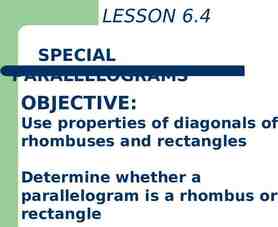Unit 1 Applied computing Delivering the outcomes 2020–2024
18 Slides320.79 KB
Unit 1 Applied computing Delivering the outcomes 2020–2024
Copyright Victorian Curriculum and Assessment Authority (VCAA) 2019. VCAA presentations may be reproduced in accordance with the VCAA’s Copyright and Intellectual Property Policy, and as permitted under the Copyright Act 1968. VCE is a registered trademark of the VCAA.
Unit 1 Applied computing
Overview Unit 1 Applied computing O1 Data analysis O2 Programming
Delivering Unit 1 Outcome 1 Data analysis
Unit 1 Outcome 1 – Background
Unit 1 Outcome 1 – Background Students need to be able to: interpret solution requirements and designs acquire and reference data analyse data and discuss relationships and patterns use software (spreadsheets and databases) to create data visualisations compare and interpret data visualisations. Students can learn through: theory and explanation of key knowledge case studies exercises in the use of software tools class activities (including from Advice for teachers).
Unit 1 Outcome 1 – Planning questions Some questions to consider when planning for Unit 1 Outcome 1: How will you prepare your students for this outcome? What do your students need to know about spreadsheets, databases and data visualisations? What functions do they need to use? You could refer to the Software functions and tools document for Units 3 and 4 Data Analytics as a guide. How will you bring the key knowledge and key skills together to develop an assessment task or assessment tasks that will meet requirements? How long will you need to teach and assess this outcome? – Will you teach and assess spreadsheets separately? – Will you teach and assess databases separately? – Will you teach and assess data visualisations separately? – Will you teach all areas and assess in one task?
Unit 1 Outcome 1 – Suitable tasks Some suitable assessment tasks could be: A folio of exercises – spreadsheet, database and data visualisations exercises to develop skills Software solutions – a spreadsheet solution, database solution and a data visualisation solution Written report – a report that presents findings through software solutions Presentation to present findings – a presentation to the class using video or PowerPoint to present findings to the class.
Unit 1 Outcome 1 – Sample task idea One sample task idea could be: Spreadsheet folios Database folios Data vis folios create worksheets import and export data use a range of data types validate data create, edit and use charts sort and filter data perform calculations using a range of functions conditional formatting secure data create tables create relationships between tables (for RDBMS) use a range of data types validate data create, edit and use queries search and filter records perform calculations create and edit formatted reports sort records or index on different fields import and export data secure data create/select a range of shapes create/select a range of chart types use symbols/images/charts show relationships and patterns enter, edit and format text and other content use colour/shading use of animation in charts (showing movement or changes in response to user input).
Unit 1 Outcome 1 – Sample task idea Another sample task idea could be: Folio of exercises A folio of exercises that includes: spreadsheets databases data visualisations Software solution Interpret teacher-provided solution requirements and designs, collect and manipulate data, analyse patterns and relationships, and develop data visualisations to present findings using: spreadsheets databases data visualisations
Delivering Unit 1 Outcome 2 Programming
Unit 1 Outcome 2 - Background
Unit 1 Outcome 2 – Background Students need to be able to: analyse solution requirements design software solutions develop software solutions test and debug the software solutions evaluate the software solutions develop project plans (individual project). Students can learn through: theory and explanation of key knowledge case studies programming exercises (developing skills) class activities (including from Advice for teachers).
Unit 1 Outcome 2 – Planning questions Some questions to consider when planning for Unit 1 Outcome 2: How will you prepare your students for this outcome? What do your students need to know about programming and managing a project? What programming language will you use? Are you familiar with it? What requirements do they need to meet? You could refer to the Programming requirements document for Units 3 and 4 Software Development as a guide. How will you bring the key knowledge and key skills together to develop an assessment task that will meet requirements? How long will you need to teach and assess this task? – time for theory – time for exercises – time to develop a solution.
Unit 1 Outcome 2 – Suitable tasks Suitable tasks for preparing students could be: A folio of exercises – a series of exercises that develops programming skills. Some suitable assessment tasks could be: Software solution – a task for students to develop a software solution Written report – a report that presents a software solution Presentation to present software solution – a presentation to the class using video or PowerPoint to present a software solution to the class.
Unit 1 Outcome 2 – Sample task idea A sample task idea could be: Folio of exercises Folio of exercises that includes: an intro to the programming language the use of design tools variables and data types naming conventions data structures procedures and functions selection control structures repetition control structures data and file management internal documentation testing and debugging Software solution Software solution with appropriate processing features that includes: classes control structures functions instructions methods Written report Written report that includes: a project plan an analysis of solution requirements mock-ups and pseudocode detailed testing table evaluation of the efficiency and effectiveness of the software solution
Phil Feain Curriculum Manager, Digital Technologies Victorian Curriculum and Assessment Authority Ph: (03) 9032 1724 [email protected]























